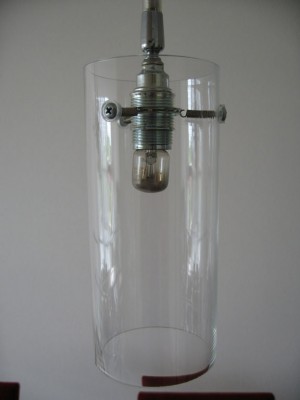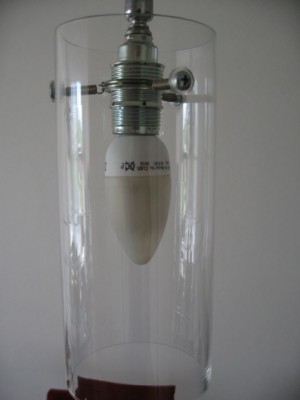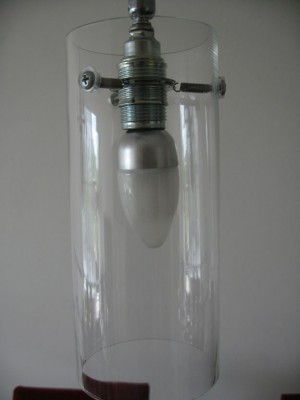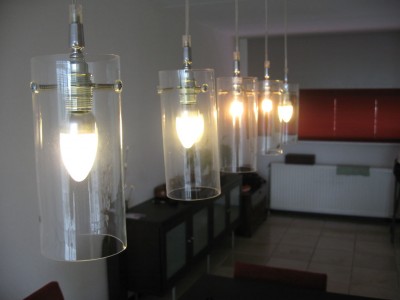 Saving energy makes sense if it’s done correctly. This simple example shows that replacing often used light bulbs for Compact Flourecant Lights has a return on investment of less than 7 months. With some small modifications the replacement also looks pretty good!
Saving energy makes sense if it’s done correctly. This simple example shows that replacing often used light bulbs for Compact Flourecant Lights has a return on investment of less than 7 months. With some small modifications the replacement also looks pretty good!
We have a dining room table light which has 5 E14 fitting type bulbs. The original bulbs were 25W a piece, which adds up to 125W total.

Waisting energy with a 125W dining room table light
Wanting to reduce our energy usage, I decided to replace them with 5W IKEA SPARSAM CFL’s. At first it didn’t look too pretty.

The first attempt, with ugly white fitting
The solution was simple: spray-paint them a matching color and such that the label text isn’t visible anymore

Improved version with matching color
Energy saved and business case
The result: the energy usage dropped from (5*25W) 125W to (5*5W) 25W. This light is turned on almost every day on average for at least 4 hours (more time during the winter and in the weekends) = 1460 hours. Multiply that with the difference = 146 KWh annually. Total savings per year (1 KWh = 0.22 euro) = 32.12 euro. Cost to replace the tradition bulbs with the IKEA sparsam bulbs = 17.5 euro (excluding the paint).
General impression
In the photograph below, you can see lights 1, 2 and 5 have been replaced with the SPARSAM bulbs while lights 3 and 4 are original (for comparison purposes). We think the SPARSAM bulbs produce more light than the original ones. The color temperature is a little bit cooler than the original ones. The only disadvantage we found was that the SPARSAM bulb takes about 5 minutes to warm up and during that period it produces less light. We’re quite happy with the light the SPARSAM bulbs produce once they’re warmed up.

Comparing the energy saving bulbs with the original bulbs
Switch to LED?
We’ve considered changing the SPARSAM bulbs to LED lights. The “PHILIPS® Novallure LED Candle Lamp E14” seems to be a suitable candidate. This bulb could lower the energy usage even further to (5*2W) 10W. LED lights don’t suffer that much from a warm-up effect.
The Philips bulb, sad to say, won’t produce enough light for our application. It’s specification notes: 50lm (while the IKEA SPARSAM’s specification notes 170lm). The price of LED bulbs also needs to drop for it to make sense to replace the SPARSAM bulbs. So for now we’re sticking with the SPARSAM bulbs.
Related articles
- Other lamp conversion articles on OliNo





1 reply on “The IKEA hack”
you also might replace the 230V to 12V converters used by Ikea by electronically switched ones saving stand by losses.